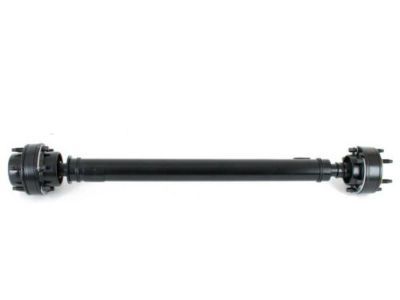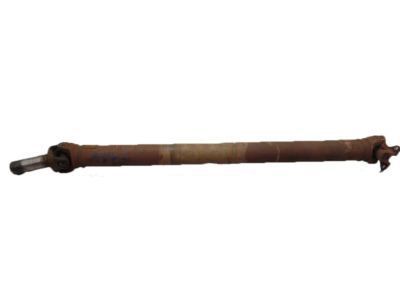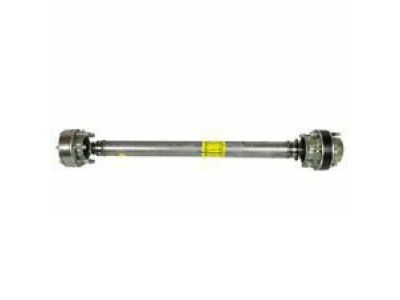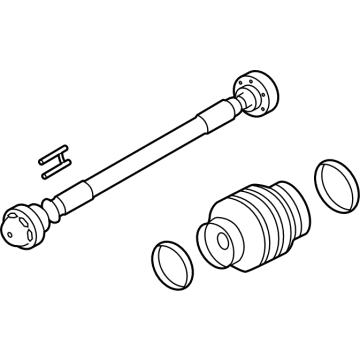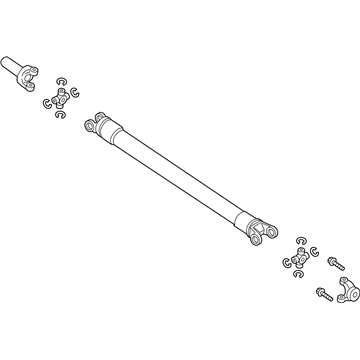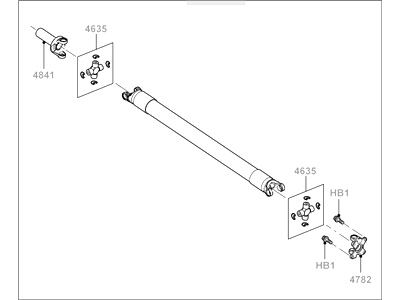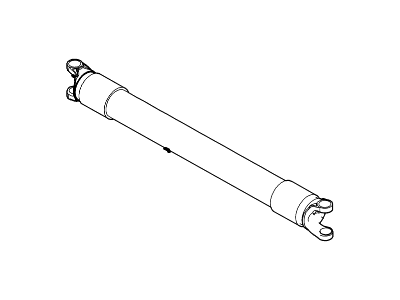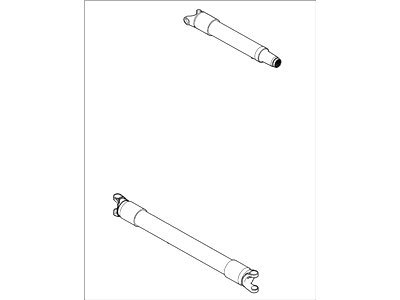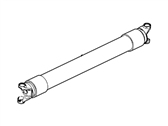×
- Live Chat
- 1-888-788-9341


My Garage
My Account
Cart
Genuine Lincoln Navigator Drive Shaft
Axle Shaft- Select Vehicle by Model
- Select Vehicle by VIN
Select Vehicle by Model
orMake
Model
Year
Select Vehicle by VIN
For the most accurate results, select vehicle by your VIN (Vehicle Identification Number).
56 Drive Shafts found
Lincoln Navigator Drive Shaft Assembly
Part Number: AL3Z-4A376-C$523.08 MSRP: $604.62You Save: $81.54 (14%)Ships in 1-2 Business DaysLincoln Navigator Drive Shaft Assembly
Part Number: JL3Z-4A376-E$398.89 MSRP: $543.08You Save: $144.19 (27%)Ships in 1-2 Business DaysLincoln Navigator Drive Shaft Assembly
Part Number: DL1Z-4602-C$370.64 MSRP: $504.62You Save: $133.98 (27%)Ships in 1-3 Business DaysLincoln Navigator Drive Shaft Assembly
Part Number: BL3Z-4A376-B$413.58 MSRP: $563.08You Save: $149.50 (27%)Lincoln Navigator SHAFT ASY - DRIVE
Part Number: ML3Z-4A376-C$432.79 MSRP: $589.23You Save: $156.44 (27%)Ships in 1-2 Business DaysLincoln Navigator Drive Shaft Assembly
Part Number: FL1Z-4602-A$337.87 MSRP: $460.00You Save: $122.13 (27%)Ships in 1-3 Business DaysLincoln Navigator Drive Shaft Assembly
Part Number: FL1Z-4602-B$389.85 MSRP: $530.77You Save: $140.92 (27%)Lincoln Navigator Drive Shaft Assembly
Part Number: 7L1Z-4602-A$370.64 MSRP: $504.62You Save: $133.98 (27%)Ships in 1-3 Business DaysLincoln Navigator Drive Shaft Assembly
Part Number: FL1Z-4R602-B$612.64 MSRP: $841.54You Save: $228.90 (28%)Ships in 1-3 Business DaysLincoln Navigator Drive Shaft Assembly
Part Number: FL1Z-4R602-A$628.32 MSRP: $863.08You Save: $234.76 (28%)Ships in 1-3 Business DaysLincoln Navigator Drive Shaft Assembly
Part Number: 7L1Z-4R602-B$354.82 MSRP: $492.90You Save: $138.08 (29%)Ships in 1-2 Business DaysLincoln Navigator Drive Shaft Assembly
Part Number: JL1Z-4R602-K$633.92 MSRP: $870.77You Save: $236.85 (28%)Ships in 1-3 Business DaysLincoln Navigator Drive Shaft Assembly
Part Number: 9L1Z-4R602-G$724.64 MSRP: $995.38You Save: $270.74 (28%)Lincoln Navigator Drive Shaft Assembly
Part Number: DL1Z-4602-A$370.64 MSRP: $504.62You Save: $133.98 (27%)Ships in 1-3 Business DaysLincoln Navigator Drive Shaft Assembly
Part Number: DL1Z-4602-D$403.41 MSRP: $549.23You Save: $145.82 (27%)Ships in 1-3 Business DaysLincoln Navigator SHAFT ASY - DRIVE
Part Number: ML3Z-4A376-H$454.26 MSRP: $618.46You Save: $164.20 (27%)Ships in 1-2 Business DaysLincoln Navigator Drive Shaft Assembly
Part Number: 7L1Z-4R602-A$387.83 MSRP: $538.76You Save: $150.93 (29%)Ships in 1-2 Business DaysLincoln Navigator Drive Shaft Assembly
Part Number: JL1Z-4R602-D$676.48 MSRP: $929.23You Save: $252.75 (28%)Ships in 1-3 Business DaysLincoln Navigator Drive Shaft Assembly
Part Number: JL1Z-4R602-J$676.48 MSRP: $929.23You Save: $252.75 (28%)Ships in 1-3 Business DaysLincoln Navigator SHAFT ASY - DRIVE
Part Number: JL1Z-4R602-L$676.48 MSRP: $929.23You Save: $252.75 (28%)Ships in 1-3 Business Days
| Page 1 of 3 |Next >
1-20 of 56 Results
Lincoln Navigator Drive Shaft
The Drive Shaft in Lincoln Navigator vehicles is a critical part through which power and torque is transmitted to the drive wheels from the engine or the transmission. It acts as the means of transmitting mechanical power and rotation in the drivetrain; the universal joint or splined joint is incorporated to deal with misalignment. In regard with the position of an Automobile, the Driveshaft may join the engine/transmission to the rear axle in rear-wheel drive automobiles or the front wheels in the front-wheel drive models. Several Drive shafts are utilized; one is the one-piece Drive shaft, the two-piece Drive shaft and others include the slip-in-tube Drive shafts, especially in models of the Navigator that has all-wheel drive systems with many Drive shafts.
We provide a wide range of Lincoln Navigator Drive Shaft at the best prices possible. If you need Lincoln Navigator Drive Shaft, you can shop with confidence on our website. All our OEM parts come with a manufacturer's warranty and are delivered to your door step with a fast delivery service.
Lincoln Navigator Drive Shaft Parts Questions & Experts Answers
- Q: How to remove and install a Lincoln Navigator's driveshaft?A: Turn off air suspension system if equipped. Raise vehicle on jackstands, place transmission in Neutral, block front wheels. Mark relationship between rear driveshaft and differential pinion flange. Remove rear universal joint bolts and center bearing support bracket bolts if applicable. Lower and remove rear driveshaft, protect extension housing. Inspect and replace seals if necessary. Check center bearing for two-piece driveshafts. Install in reverse, align marks, tighten bolts. For front driveshaft on 4WD models, remove shield, mark relationships, remove bolts, lower and remove driveshaft. Inspect and replace seals if needed. Install front end to front axle differential pinion flange, attach rear end to transfer case output shaft companion flange, secure shield. Remove jackstands, lower vehicle, reactivate air suspension if applicable.
- Q: What is the purpose of a driveshaft and Universal Joint and how does it function in a Lincoln Navigator?A: The driveshaft sends engine power to the rear axle through the transmission. At either end of a driveshaft universal joints are used. Although many U-joints are single-cardan type, some 4WD models have double-cardan U-joints. A slip yoke is located at the front of a rear driveshaft, and it connects to a Differential by means of a flange yoke. Front driveshafts on 4WD have a slip yoke on each end. The only time a driveshaft may need attention is when the universal joints wear out and need replacing as they are serviceable items which require little maintenance otherwise. Additionally, the driveshaft should be inspected for damage during service procedure and cleaned of any debris that might be present in order for it to function properly again as well.
Related Lincoln Navigator Parts
Browse by Year
2024 Drive Shaft 2023 Drive Shaft 2022 Drive Shaft 2021 Drive Shaft 2020 Drive Shaft 2019 Drive Shaft 2018 Drive Shaft 2017 Drive Shaft 2016 Drive Shaft 2015 Drive Shaft 2014 Drive Shaft 2013 Drive Shaft 2012 Drive Shaft 2011 Drive Shaft 2010 Drive Shaft 2009 Drive Shaft 2008 Drive Shaft 2007 Drive Shaft 2006 Drive Shaft 2005 Drive Shaft 2004 Drive Shaft 2003 Drive Shaft
